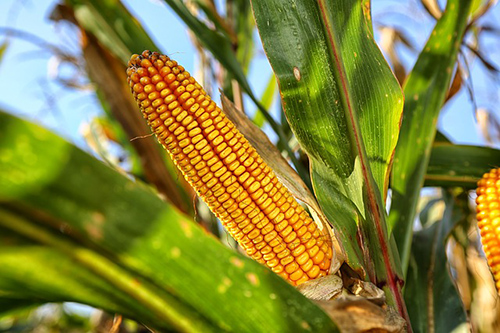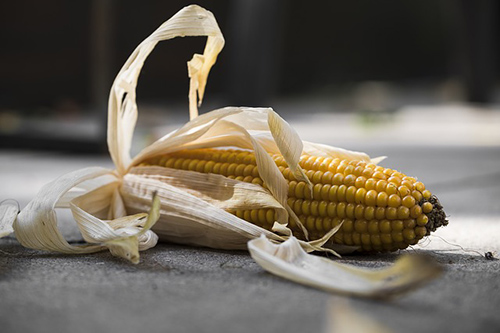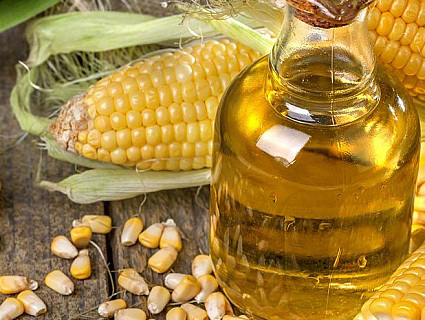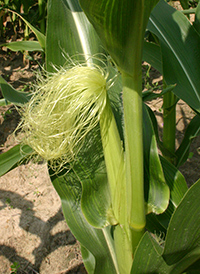Contents
Indian corn was an essential food for most inhabitants of America before Columbus arrived there. Aztecs, Mayans, Incas, and Native Americans cultivated it from the Southern United States to Peru and Bolivia. Corn remains have existed in prehistoric Mexican sites for over 4000 years.
Indian corn spread all over Spain until, more than 80 years later, Gonzalo Mendez de Cancio, the Spanish governor of Florida, watched the plant in several yards and gardens of Seville. He started the cultivation of corn in Asturias, northern Spain, in 1604. Slowly, the yellow grains conquered European cuisine. Moreover, in the 18th century, it was found that its “beard” or silk had remarkable medicinal properties.

Indian Corn Scientific Facts
- Other names: Maize.
- Scientific name: Zea mays L.
- French: Mais.
- Spanish: Maiz.
- Environment: Indian corn is native to Central America and Mexico and cultivated worldwide as food and forage. It does not exist as a wild plant.
- Description: Indian corn is an annual plant of the Gramineae family. Its male and female flowers are separated. The latter gathers in a spike, which later becomes a corncob. From any of the female flowers of these cobs, silk, some 20 cm long, grows. All the silk forms the hair of corn. The fruits are corn grains.
- Parts of the plant used medicinally: The fruits and the silk.
Healing Properties and Uses
Corn grains contain sugars or carbohydrates (70-77 percent), proteins (7-10 percent), fats (3-5 percent), minerals, and trace elements (mainly flour). Its proteins are more complete than previously supposed, though inferior to those of wheat and soya. However, like rice, it lacks gluten, a protein that can produce inflammatory reactions in the intestinal mucosa, a disorder known as celiac disease.
The uses of corn GRAINS are the following:


- Emollient and protective of the intestinal mucosa, corn and flour are beneficial for people with celiac disease and, generally, for children suffering from intestinal malabsorption or chronic diarrhea because they contain no gluten.
Today, for children on a milk diet, a transition diet is recommended, from only milk to milk with grains—flour with rice or corn baby foods—which, lacking gluten, are better tolerated than those made of wheat, barley, or rye, which do have gluten. - Metabolism retardant. Corn slows the activity of the thyroid, thus retarding the metabolism. It is recommended for people suffering from hyperthyroidism, anemia, and malnutrition and for recovering people as a recovering food. It is helpful in weight-gain diets.
However, we have to say that corn protein, called zeanin, is poor in lysine and tryptophan, two essential amino acids, and niacin, a vitamin factor. Hence, people with corn as a diet base usually suffer nutritional deficiencies, producing diseases such as pellagra. On the other hand, when corn is combined with different grains, legumes, or milk as a component of a varied diet, it turns out to be a very nutritious food, which helps provide the protein needs of any diet. - Cholesterol reduction. The OIL obtained from corn germ is very rich in unsaturated fatty acids, thus being recommended for those who suffer from excess cholesterol in the blood.
Externally used, corn FLOUR is applied as hot poultices on kidneys for renal colic and the urinary bladder for cystitis. Its effects are enhanced when used in combination with silk infusion.
Corn Silk

The SILK of the corn, which makes its beautiful hair, are fine ducts that end in its flowers’ ovaries. Pollen grains enter through these hairs to fertilize ovaries. Stigma are rich in potassium and flavonoids, which give them diuretic properties; they also contain allantoin, which makes them soothing and anti-inflammatory, and tannin and steroids. Their diuretic and depurative properties are intense and well-tolerated, not irritating kidneys or producing any imbalance in the electrolyte balance of the blood. The silk can be taken for long periods and is especially recommended in the following cases:
- Circulatory afflictions: edema (retention of liquids), swollen legs (even during pregnancy), heart disorders, high blood pressure, and an excess of salt in the diet.
- Phosphorus, oxalate, or uric calculi cause renal lithiasis, and its soothing and anti-inflammatory properties cause renal colic.
- Kidney inflammation (nephritis), urinary bladder inflammation (cystitis), and albumin in the urine (nephrosis).
- Gout (excess of uric acid), arthritis, subpalpebral edema (bags under the eyes), and whenever elimination of the excess of toxins from the blood is required (for instance, after suffering from influenza).
Corn silk is the single most significant herb for increasing urine flow that aids in treating urine and bladder conditions. This herb is used for various conditions such as urine retention, excess uric acid, prostatitis, kidney stones, inflammation of the bladder and kidneys, chronic cystitis, and bed-wetting. It is also beneficial for all inflammation conditions of the kidneys, bladder, prostate, and urethra. Corn silk can remove gravel from the prostate, bladder, and kidneys.
Corn silk helps the elderly when their urine is sediment-filled and scanty. You can use it with other kidney herbs when the urinary tract needs to open up or when mucus is in the urine. When taken several hours before going to bed, it reduces the frequency of bedwetting. It is a fantastic remedy for edema and dropsy caused by a weak heart.
Infusion: Steep for five to fifteen minutes. Take three ounces as needed. Tincture: Take five to twenty drops three times daily. Fluid Extract: Take ¼ to ½ teaspoon three times daily. Powder: Take one to five #0 capsules (5 to 30 grains) thrice daily.
How to use Corn
- Food. Indian corn and its flour are eaten in many dishes and meals, just like any other food.
- Silk infusion: 30 grams per liter of water. Drink three to five cups daily, cold or hot, in the morning or the evening, but never at night.
- Oil. Oil is obtained from Indian corn germ. Use it like any other cooking oil, preferably raw.
- A poultice of cornflour is applied hot on the kidney or urine bladder area for 10 minutes, twice or thrice daily. Applications should be used in combination with silk infusion for renal colic cystitis.
WARNING! Due to their strong diuretic properties, Corn silk is not recommended for people suffering from prostate hypertrophy.
DISCLAIMER: All content on this website is presented solely for educational and informational objectives. Do not rely on the information provided as a replacement for advice, diagnosis, or treatment from a qualified medical expert. If you are pregnant, nursing, or have any preexisting medical concerns, talk to your doctor before using any herbal or natural medicines.
REFERENCES
- George D. Pamplona-Roger, M.D. “Encyclopedia of Medicinal Plants.” George D. Pamplona-Roger, M.D. Encyclopedia of Medicinal Plants. Ed. Francesc X. Gelabert. vols. 2 San Fernando de Henares: Editorial Safeliz, 2000. 599,600, 601. Print. [Indian corn]
- Vance Ferrell Harold M. Cherne, M.D. The Natural Remedies Encyclopedia [Book]. – Altamont, TN: Harvestime Books, 2010. – Vol. Seventh Edition: 7: pp. 154.
- WebMD: https://www.webmd.com/food-recipes/corn-health-benefits
- Healthline: https://www.healthline.com/nutrition/foods/corn
